Many of us know millet primarily as an ingredient in bird feed, but it’s also a highly nutritious and tasty staple that can complement a wide array of flavors and cuisines.
Like quinoa and amaranth, millet is actually a seed, but it’s classified as a grain in cookbooks because that’s the way it’s most often prepared. Gluten-free, and high in both protein and fiber, this subtle and slightly nutty-flavored traditional grain is enjoying a comeback in prepared foods, like cereals, breads and crackers, and as an alternative grain for healthy home cooking.
Millet is most often served like rice, although in Eastern Europe, China, India and Africa, it’s also used to make hot cereals; thin, unleavened breads; and even fermented beverages.
Millet seeds are tiny and almost perfectly spherical — about 1 to 2 millimeters in diameter. Although there are several types of commonly eaten millet, pearl millet, which is usually eaten in the United States, accounts for 50 percent of the world’s millet crop.
Typically sold whole, millet is also available in a cracked form (which is used in traditional couscous) and, increasingly, as a whole-grain flour.
Thanks to its mild, neutral flavor and delicate texture, millet combines well with a wide variety of dishes. So read on to learn all about it — then experiment and enjoy!
Nutritional Health Benefits
- Easy to digest, millet is gluten-free and rich in amino acids, especially leucine, cystine and phenylanaline.
- A 1-cup serving of cooked millet provides about 12 percent of the daily recommended amount of protein.
- The seed’s dietary fiber — 1 cup has about 9 percent of the daily recommended amount — helps keep the digestive tract operating smoothly and lowers the risk of diabetes and heart disease.
- Studies have shown that fiber in whole grains like millet helps protect women against gallstones and premenopausal women against breast cancer. It also supports cardiovascular health in postmenopausal women.
- It’s a great source of B vitamins, especially niacin (B3), thiamin (B1) and B6, which play critical roles in the body.
- Millet is also rich in minerals such as manganese (an enzyme activator that improves bone structure), magnesium (which lowers cholesterol and the risk of heart attack and type 2 diabetes), phosphorous (which helps the body efficiently process carbohydrates, fats and proteins), and copper (which supports good metabolism).
- Millet is a thyroid peroxidase inhibitor, so if you suffer from thyroid-related diseases, you may want to avoid it.
Kitchen Tricks
To bring out the nutty flavor in millet, first rinse and drain it in a fine mesh strainer, then place damp seeds in a dry sauté pan. Heat over medium heat, stirring constantly, until the water has evaporated and the grains have separated, turned lightly brown and smell nutty (about four minutes).
Then cook as directed below.
- For a classic, ricelike texture, use 1 cup millet to 2 1/2 cups water or broth. Bring to boil, then reduce to a low flame, cover and cook for 15 to 20 minutes, until all liquid is absorbed.
- For a lighter, fluffier effect, cook with a little less water (1 cup millet to 2 cups liquid).
- For a dense, creamy texture (good for cereal or polenta), use more water (1 cup millet to 3 cups liquid).
Shopping and Storage Tips
- Millet seeds can go rancid quite quickly (a bitter flavor and aftertaste is your clue). Ground millet flour spoils even faster, so store it in the refrigerator. If you use only small quantities of millet flour at a time, you can buy the whole seeds and grind them into a coarse flour in a clean coffee grinder or spice mill.
- Prepackaged millet seeds are available in many grocery stores (often in the natural foods section), but you may opt for a bulk bin at a natural foods market where the inventory moves quickly, and where you can buy only as much as you need.
- Store millet in a covered container in a cool, dark place for up to two months. Large quantities can be frozen in a freezer bag for up to six months.
Sneak-It-In Strategies
- Toss leftover cooked millet with chopped vegetables and your favorite vinaigrette for a quick and easy salad.
- For a tasty vegetarian entrée, combine warm millet with finely chopped vegetables and a sprinkle of Parmesan cheese. Form into cakes or croquettes, then refrigerate on a baking sheet for 30 minutes. Bake in a 350-degree F oven for 20 minutes until golden brown, or cook in a sauté pan in a small amount of olive oil to brown on both sides.
- Millet makes fabulous polenta. Cook with sautéed onions and vegetable stock until thick and creamy, then finish with a strong cheese such as Roquefort or Parmesan to make it extra creamy. Millet polenta can be served hot, or pressed into a pan, cut when cool, then grilled or sautéed.
- Keep cooked millet in your refrigerator so you can add it to dishes on the fly. Try it instead of breadcrumbs when making burgers, meatloaf or meatballs.
- Try substituting 1/4 cup millet flour for 1/4 cup wheat flour in your favorite banana-bread recipe. Millet flour can also be mixed into pancake or waffle batter, adding a rich, nutty flavor.
- Homemade whole-grain bread can be made even better with a 1/4 cup of washed and toasted millet added into the flour mixture, providing fiber, texture and flavor.
Quenelles of Millet Polenta
Cooked like polenta and presented like a French quenelle (an oval-shaped dumpling), this recipe has complex and complementary flavors to enhance stews, meats or other protein entrées.
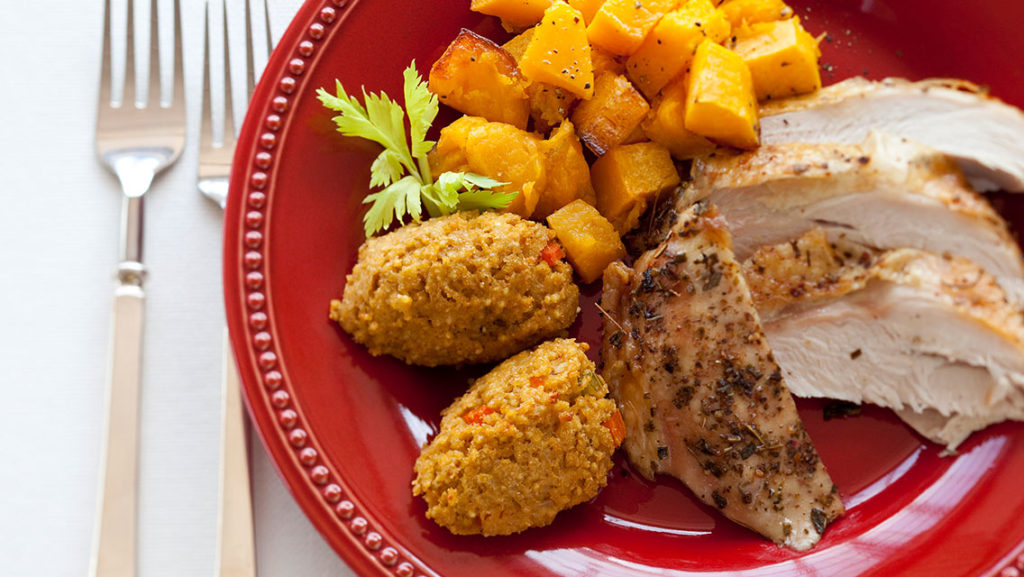
Makes eight servings
Ingredients
- 1 cup millet
- 3 cups vegetable stock
- 1/4 tsp. extra-virgin olive oil
- 1/4 cup chopped yellow onion
- 1 tsp. minced fresh garlic
- 1/4 cup chopped carrot
- 1/4 cup chopped celery
- 1/4 tsp. sea salt
- 1/4 tsp. freshly ground black pepper
- 1 tbs. crumbled Roquefort blue cheese
- Olive oil cooking spray
Directions
- Rinse the millet in a fine mesh strainer and toast it in a sauté pan over medium heat until lightly browned or toasted, about four minutes.
- In a saucepan, heat the vegetable stock to a low boil. Heat a medium saucepan over medium heat. Add the olive oil to coat the bottom of the pan. Mix in the onion, garlic, carrot and celery, and sauté for two minutes to soften the onions. Add the toasted millet, salt and pepper, and mix thoroughly.
- Add the hot vegetable stock to the millet, cover and simmer for approximately 15 to 20 minutes. Stir in the crumbled blue cheese.
- Preheat the oven to 400 degrees F. Lightly coat the bottom of a baking sheet with olive oil cooking spray.
- Using two large spoons, shape the millet mixture into quenelles: First scoop up enough mixture to fill one spoon. Then, using a rolling and pressing motion, pass it back and forth from one spoon to the other to smooth and shape the mixture, repeating the process about three times until you have a tight football-shaped dumpling. (For more quenelle-shaping pointers, watch this “How to Quenelle” video on YouTube: http://www.youtube.com/watch?v=MXcIZ4aRHBU&feature=related.) Alternatively, form oval-shaped dumplings by hand, or use a small round scoop and form balls. Place quenelles on the prepared baking sheet and bake for about seven minutes or until crispy and light golden brown.
Coconut Millet Salad
A nice, bright change for a winter lunch, coconut-infused millet tossed with raisins and peanuts makes a great salad to serve with chicken satay, Asian turkey burgers or stir-fried tofu. You can also spoon it into Boston or Bibb lettuce leaves to make a wrap.
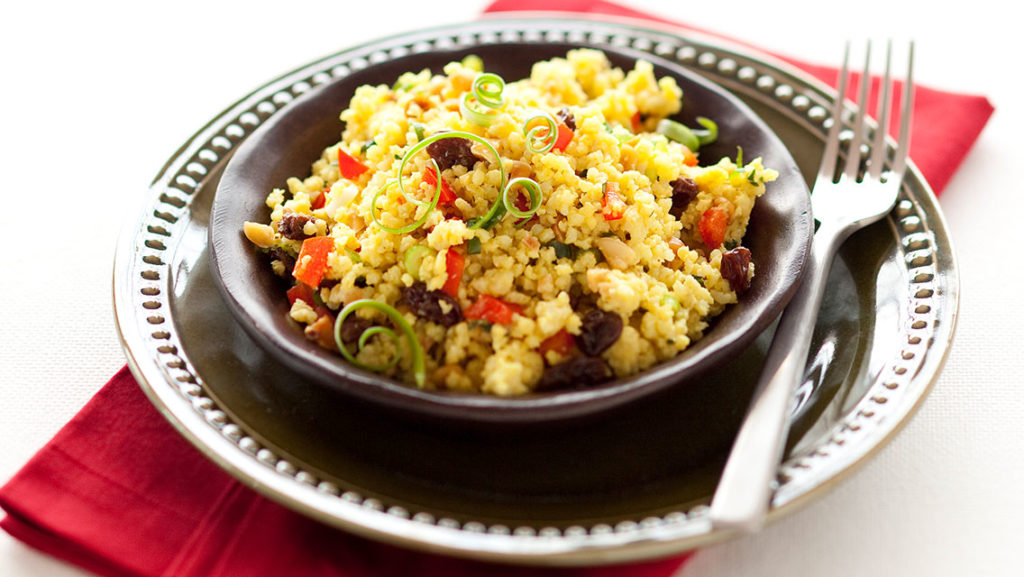
Makes six servings
Ingredients
- 1 cup millet
- 1 1/2 cups water
- 1 cup coconut milk
- 1 tsp. curry powder
- 1 cup finely chopped red pepper
- 1/4 cup finely chopped green onions
- 1/2 cup raisins
- 1/2 cup roasted, unsalted peanuts, chopped
- 2 tbs. chopped fresh cilantro
- 1 tbs. soy sauce
- 1 tbs. seasoned ricewine vinegar
Directions
- Rinse the millet in a fine mesh strainer and toast it in a sauté pot over medium heat until lightly browned or toasted, about four minutes. Remove from pan; use pan in next step.
- Heat the water, coconut milk and curry powder to a low boil. Add the toasted millet to the pan, bring to a boil again, cover and turn down the heat to simmer. Cook until all the water is absorbed and the millet is tender, about 15 to 20 minutes.
- Add the cooked millet to a mixing bowl and toss with red peppers, green onions, raisins, peanuts and cilantro. In a small bowl, whisk together the soy sauce and vinegar. Drizzle soy-sauce mixture into the millet and toss to combine. Refrigerate for at least 30 minutes before serving.
Exotic Mushroom and Millet Soup
Toasted millet can be used to thicken soup instead of a roux — it creates a creamy base in this mushroom soup without using any dairy. Its earthy and nutty flavor adds complexity to the soup while adding a boost of vitamins and minerals.
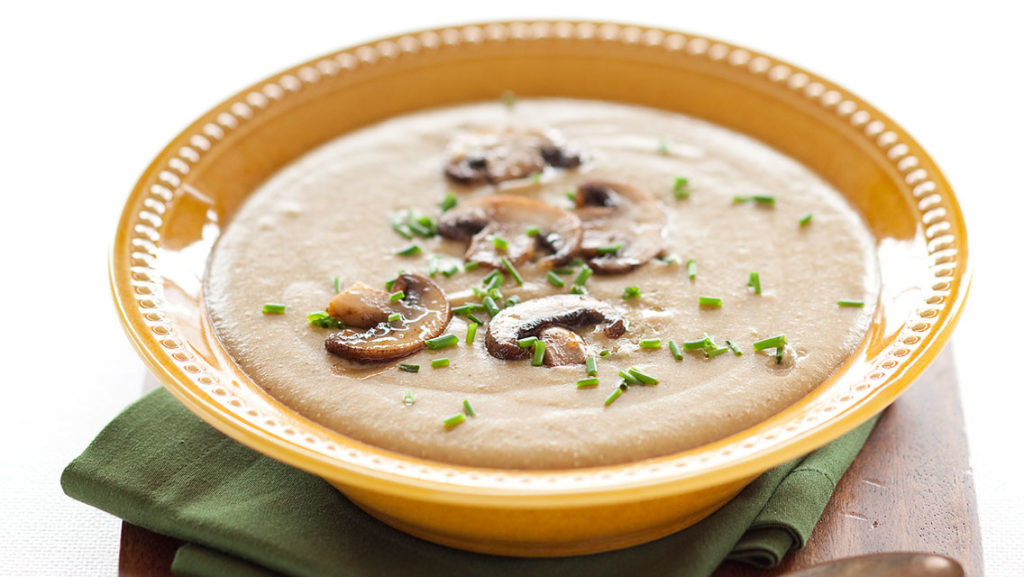
Makes seven (1-cup) servings
Ingredients
- 1 cup millet
- 1/4 tsp. extra-virgin olive oil
- 1 cup chopped yellow onion
- 1 cup chopped celery
- 1 tsp. minced garlic
- 2 cups packed sliced shiitake mushrooms
- 2 cups packed sliced oyster mushrooms
- 3 cups packed sliced portabella mushrooms
- 2 tsp. dried thyme
- 1 bay leaf
- 7 cups vegetable stock, plus more for thinning soup
- 1 tsp. sea salt
- 1/2 tsp. freshly ground black pepper
- Enoki mushrooms and chives, to garnish (optional)
Directions
- Rinse the millet in a fine mesh strainer and toast in a sauté pot over medium heat until lightly browned, about four minutes. Remove from pan; use pan in next step.
- Heat the olive oil in a medium saucepot over medium-high heat. Add the onion, celery and garlic, and cook for two to three minutes or until onions are soft and transparent. Stir in mushrooms and cook for an additional three minutes until the mushrooms have started to release their juices. Stir in the millet, thyme, bay leaf and vegetable stock. Bring to a boil and then reduce heat to a simmer for 15 to 20 minutes until millet is soft and fully cooked. Stir often while cooking to prevent millet from sticking on bottom of the pot and skim any sediment that may rise to the top of the soup.
- Remove and discard bay leaf and carefully ladle the soup into a blender and blend until smooth. Return the soup to a pan and adjust thickness with additional hot vegetable stock. Heat until hot. Season with sea salt and freshly ground pepper. Garnish with enoki mushrooms and chives, if desired.
Apricot Millet and Quinoa Hot Cereal
Millet and quinoa both provide a wealth of nutrients, which makes them a great choice for a hearty breakfast. This cereal offers a wonderful alternative to oatmeal. Leftovers can be pressed into muffin tins and cooled in the refrigerator. Remove the next day for a hand-held breakfast treat (can be enjoyed with nut butters, fruit jams, cream cheese or any other toppings you enjoy).
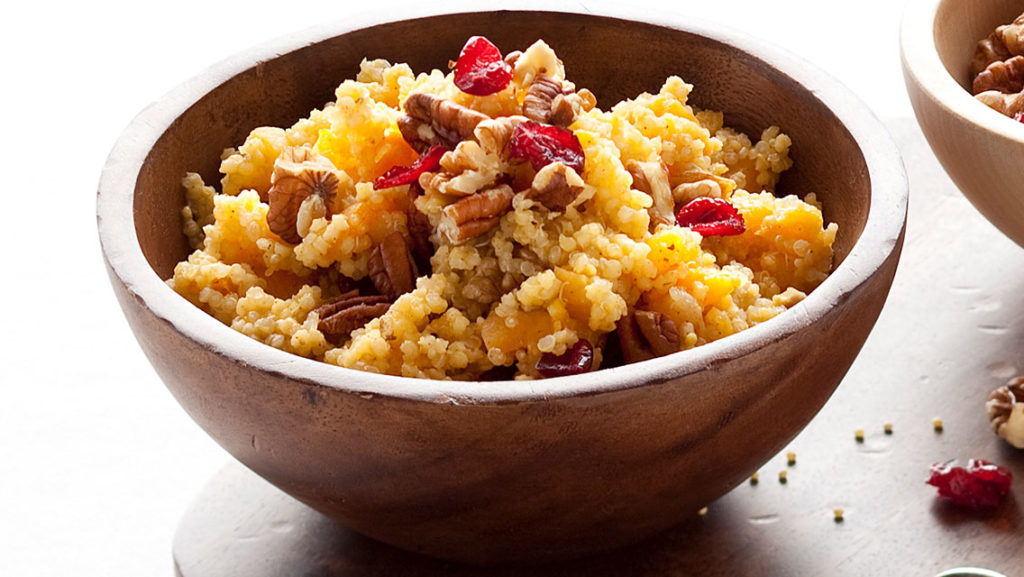
Makes four servings
Ingredients
- 1/2 cup millet
- 1/2 cup quinoa
- 2 cups water
- 1 1/2 cups apricot or papaya nectar
- 1 cup finely chopped dried apricots
- 1/2 tsp. ground cinnamon
- 1/4 tsp. ground mace
- 1/4 cup cottage cheese (feel free to substitute cream or buttermilk, if you’d like)
- 2 tbs. maple syrup
Directions
- Bring water, papaya nectar, apricots, cinnamon and mace to a boil.
- Rinse the millet and quinoa in a fine mesh strainer and toast in a sauté pan over medium heat until lightly browned or toasted, about four minutes.
- Add grains to sauce pot, reduce heat and simmer. Cover pan and cook until liquid is absorbed and grains are tender, 15 to 20 minutes.
- Remove from heat and stir in the cottage cheese and maple syrup.
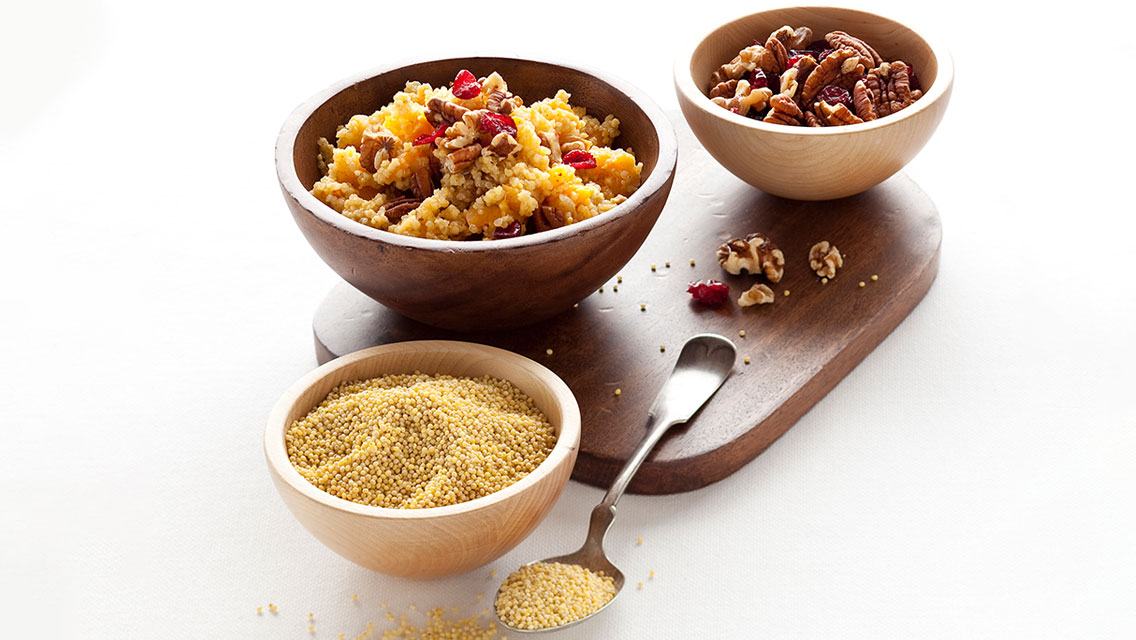
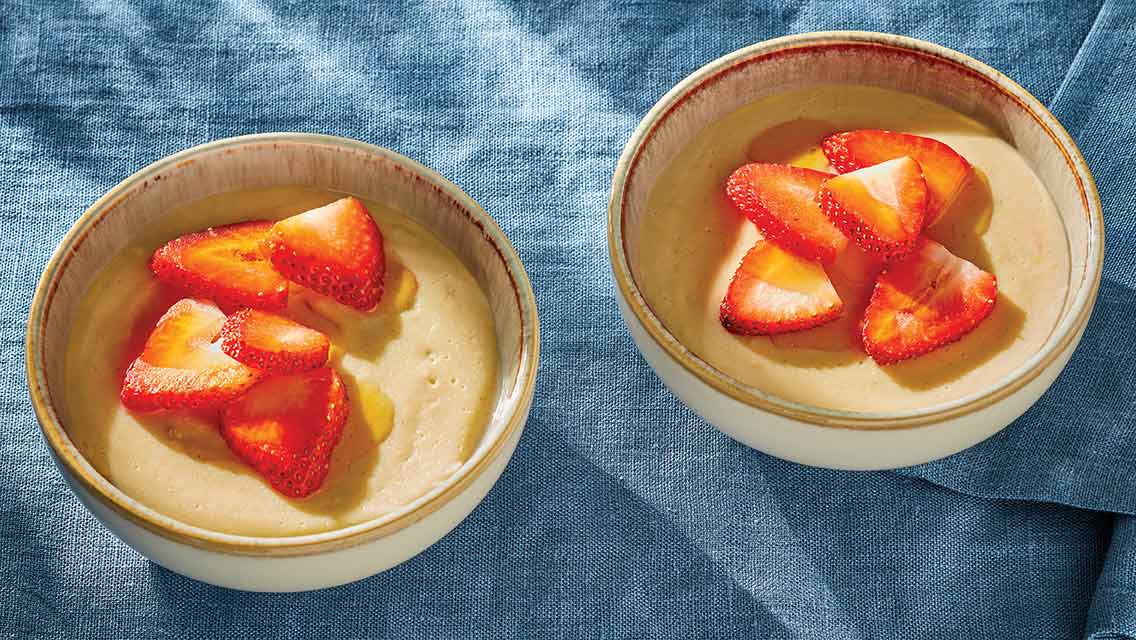
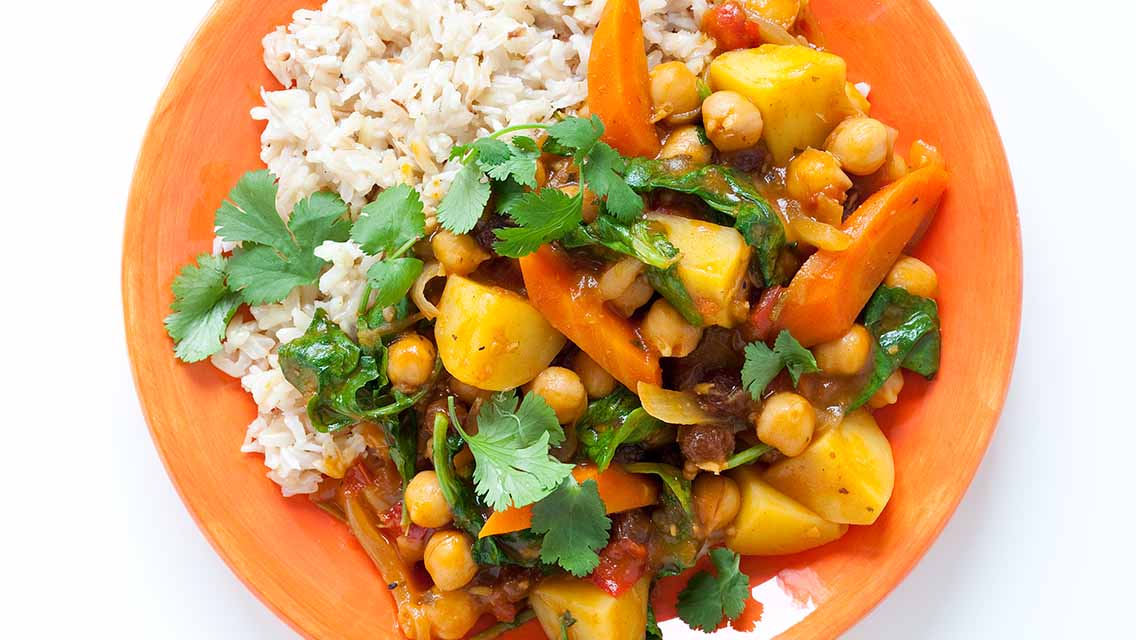
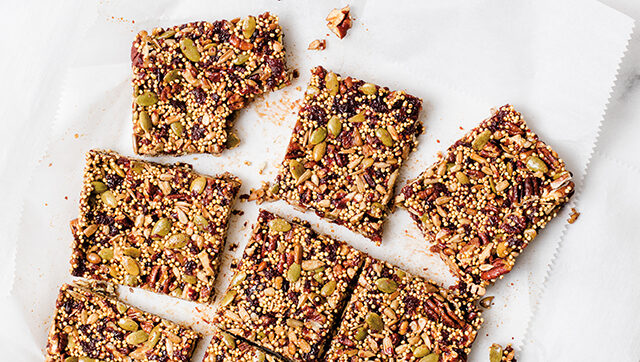
This Post Has 0 Comments